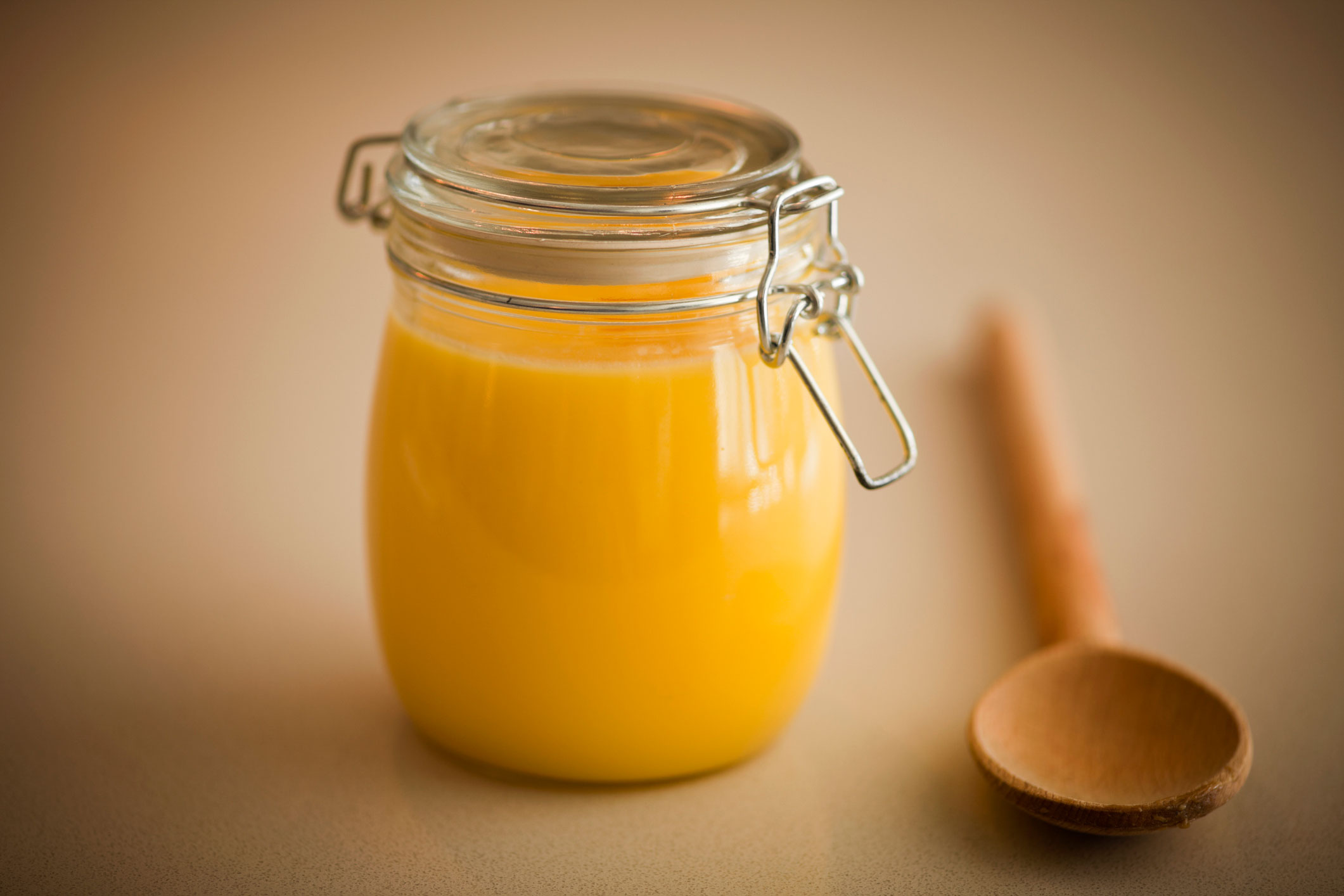
It’s a mainstay in traditional Indian cooking and has become a staple in the Paleo diet. People are even adding it to their morning coffee. So what about ghee—a variation of clarified butter that originated in India—is so different from butter?
Clarified butter is unsalted butter that is heated gently, causing the milk solids to separate from the golden liquid and drift to the bottom of the pan after the butter has melted. Any foam that is present is skimmed off of the surface, leaving just the liquid. Removing the milk solids gives the butter (now clarified) a higher smoke point, making it ideal for high cooking temperatures. It also prevents the butter from spoiling as quickly, though it doesn’t offer quite as rich of a taste compared to regular butter.
Ghee is like clarified butter taken a step further. Once the milk solids have separated, the butter is simmered until all of the moisture evaporates and the milk solids brown slightly. The result is the browned, nutty and caramel-like taste and aroma ghee is known for. Ghee has a longer shelf life than butter and higher smoke point at 375 degrees, making it ideal for sautéing and searing. You can easily make ghee at home, using just unsalted butter and a heavy saucepan. It can be refrigerated for 6 months or frozen for a year.
How do I use ghee?
Ghee is great for deep- or pan-frying. It can be used when toasting spices, as opposed to dry roasting, when making authentic Indian dishes. This technique results in a richer version of the spice’s original flavor. Ghee can be thought of simply as a more durable, more flavorful butter replacement, and it can be used as a condiment you spread on toast or toss with vegetables. A more traditional variation of ghee worth trying is flavored ghee, made by adding ginger, peppercorns, cumin, or other spices at the very beginning of the clarifying process.
What are the benefits of cooking with ghee?
Ghee is more convenient than butter, given its higher smoke point and longer shelf life, but that’s not the only reason people make the switch. Ghee is more tolerable for those who have sensitivities to lactose, because the milk solids have been removed. That said, it’s still made from dairy, so those with more serious dairy allergies should steer clear.
Buy grass-fed ghee, or make your own with grass-fed butter. The nutrition and composition of ghee depends on the milk that was used to originally make the butter which was, in turn, used to make the ghee. Ghee contains medium-chain fatty acids, which may be easier to digest and better for your heart compared to other saturated fatty acids. Ghee also has a higher concentration of butyric acid than butter—a type of acid known for its positive effects on immune function and anti-inflammatory activity. Some early evidence also suggests that butyric acid is linked to improvement in irritable bowl syndrome. Still, ghee is entirely fat, and though fats are necessary to a healthy life, eating ghee in an excessive manner, just like butter, could have negative health effects.
Try using ghee in vibrant dishes like Tofu Saag, Winter Greens Curry, Indian Baklava or Black Cardamon Beef Sliders.
This article originally appeared on MyRecipes.com
More Must-Reads from TIME
- How Donald Trump Won
- The Best Inventions of 2024
- Why Sleep Is the Key to Living Longer
- Robert Zemeckis Just Wants to Move You
- How to Break 8 Toxic Communication Habits
- Nicola Coughlan Bet on Herself—And Won
- Why Vinegar Is So Good for You
- Meet TIME's Newest Class of Next Generation Leaders
Contact us at letters@time.com